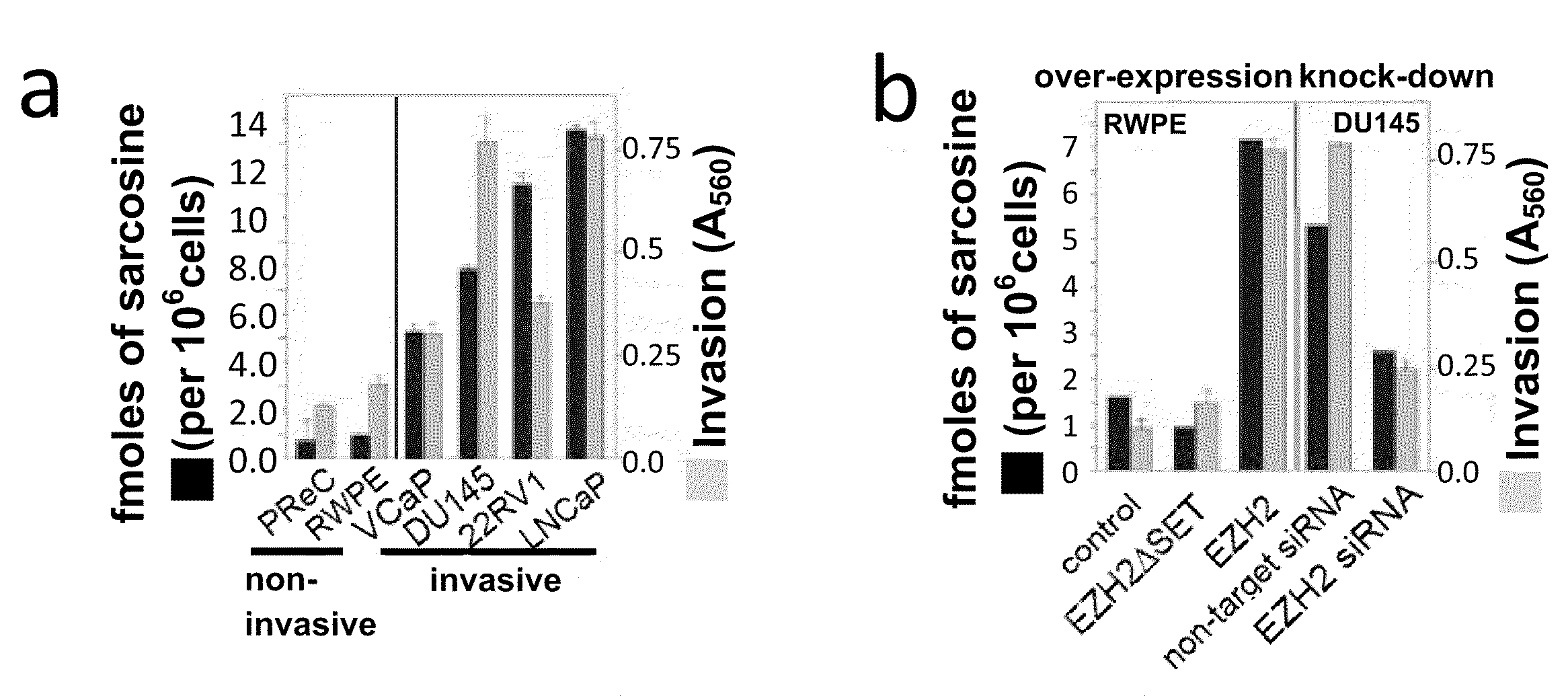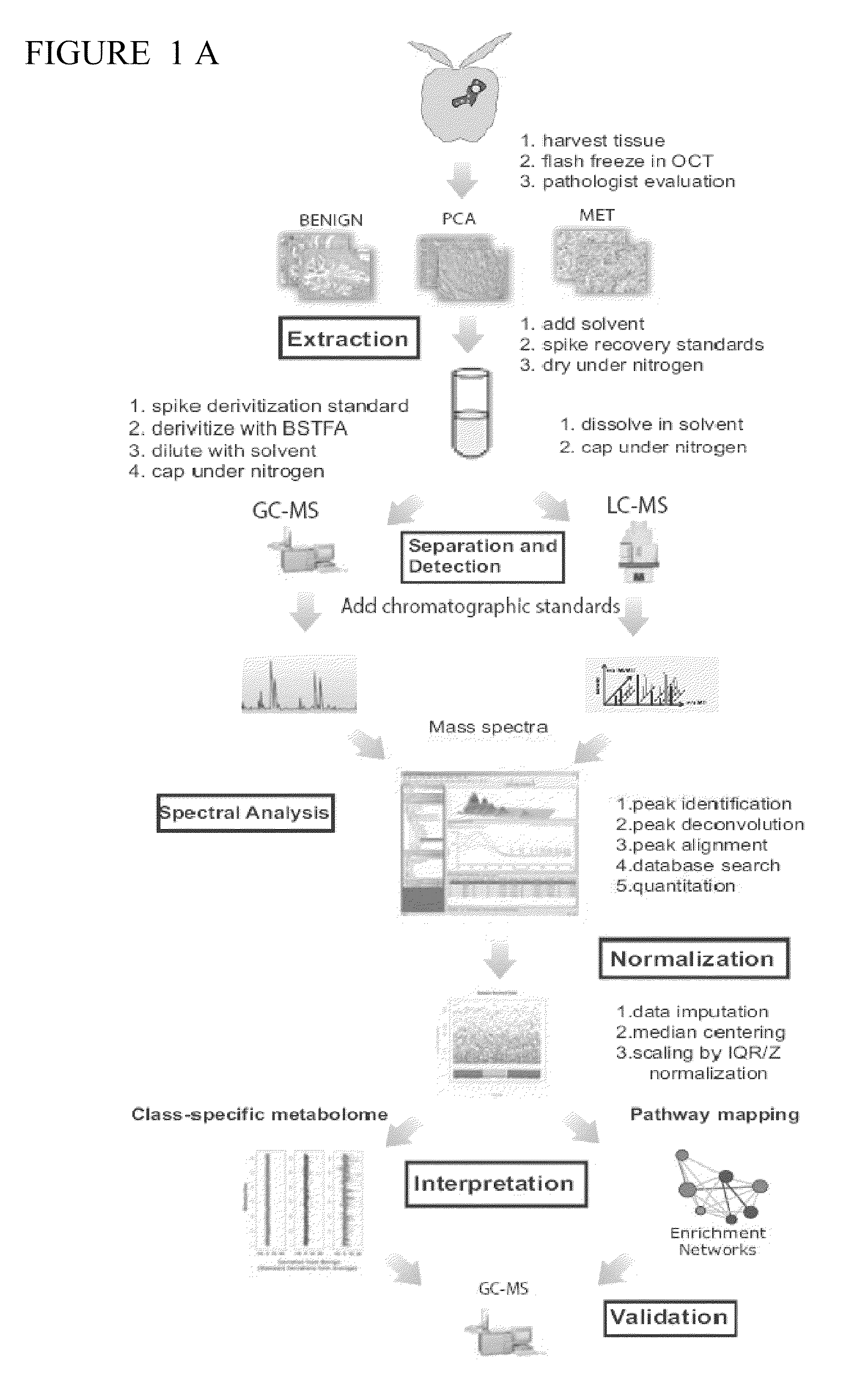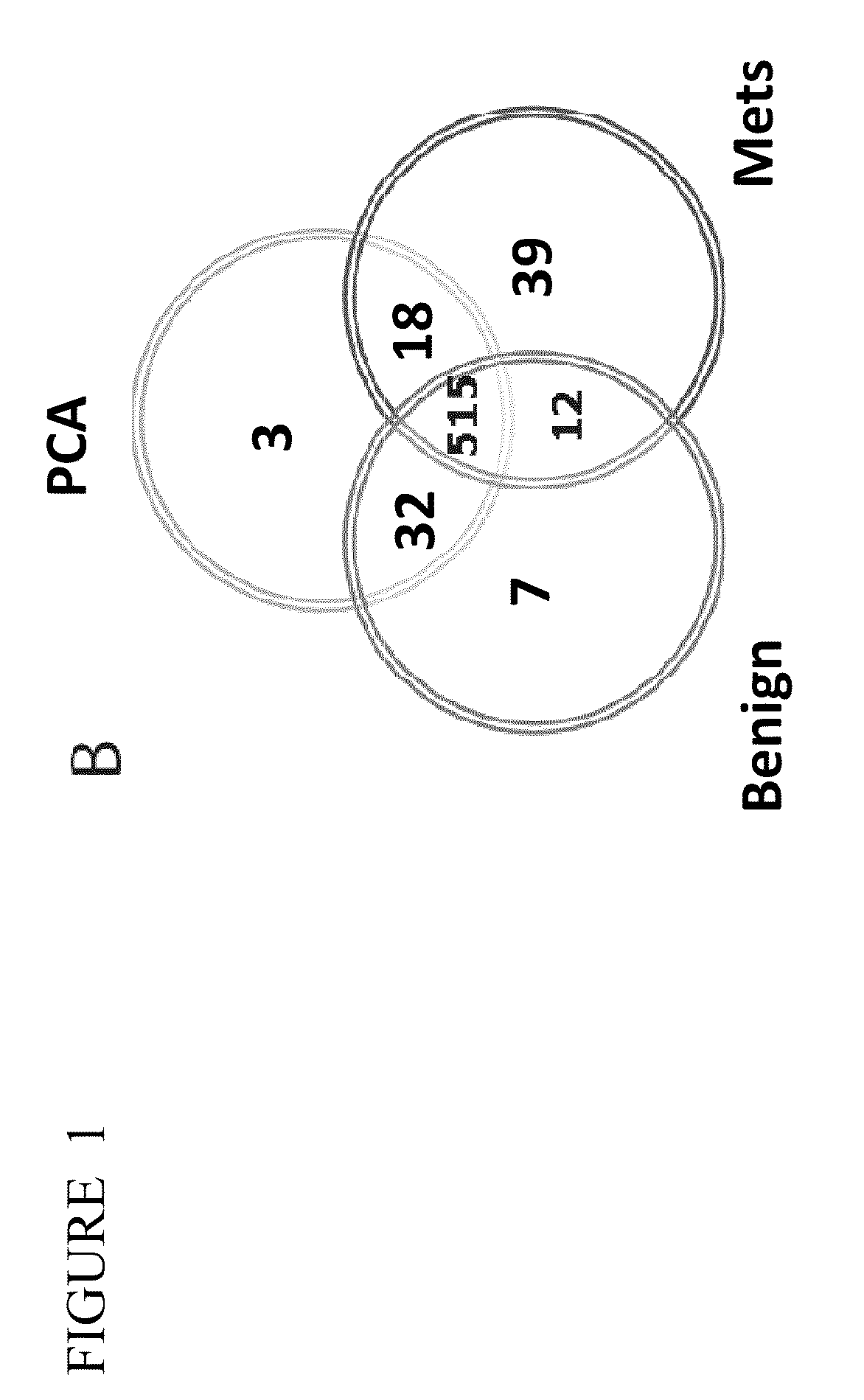Metabolomic profiling of prostate cancer
a prostate cancer and metabolic profiling technology, applied in the field of cancer markers, can solve the problems of lack of prostate cancer sensitivity and specificity of serum psa tests, and the impact of psa screening on cancer-specific mortality, and achieve the effect of high throughput methods
- Summary
- Abstract
- Description
- Claims
- Application Information
AI Technical Summary
Benefits of technology
Problems solved by technology
Method used
Image
Examples
example 1
A. Methods
[0150]Clinical Samples: Benign prostate and localized prostate cancer tissues were obtained from a radical prostatectomy series at the University of Michigan Hospitals and the metastatic prostate cancer biospecimens were from the Rapid Autopsy Program, which are both part of University of Michigan Prostate Cancer Specialized Program of Research Excellence (S.P.O.R.E) Tissue Core. Samples were collected with informed consent and prior institutional review board approval at the University of Michigan. Detailed clinical information on each of the tissue samples used in the profiling phase of this study is provided in Table 1. Analogous information for tissues and urine samples used to validate sarcosine are given in Tables 5 and 6 respectively. All the samples were stripped of identifiers prior to metabolomic assessment. For the profiling studies, tissue samples were sent to Metabolon, Inc. without any accompanying clinical information. Upon receipt, each sample was accession...
example 2
Biomarkers of Tumor Aggressiveness
[0199]This example describes biomarkers that are useful in combination to distinguish prostate cancer tumors based on the level of tumor aggressiveness. The tissue samples used in the analysis ranged from non-aggressive (i.e., benign) to extremely aggressive (i.e., metastatic). Biomarkers were measured in benign prostate tissues (N=16), Gleason score major 3 (GS3) tumors (N=8), Gleason score major 4 (GS 4) tumors (N=4) and metastatic tumors (N=14). The levels of a four biomarker panel comprised of citrate, malate, N-acetylaspartate (NAA) and sarcosine (methylglycine) were measured in each sample. The ratio of the biomarkers citrate and malate was determined (citrate / malate). The results of the analysis show that a metabolite panel can be used to distinguish between more aggressive and less aggressive tumors and are presented in FIG. 29). The metastatic tumors (most aggressive) were grouped together and were separated from the benign (non-aggressive)...
example 3
Biomarkers Discovered in Urine
I. General Methods
[0201]A. Identification of Metabolic Profiles for Prostate Cancer
[0202]Each sample was analyzed to determine the concentration of several hundred metabolites. Analytical techniques such as GC-MS (gas chromatography-mass spectrometry) and UHPLC-MS (ultra high performance liquid chromatography-mass spectrometry) were used to analyze the metabolites. Multiple aliquots were simultaneously, and in parallel, analyzed, and, after appropriate quality control (QC), the information derived from each analysis was recombined. Every sample was characterized according to several thousand characteristics, which ultimately amount to several hundred chemical species. The techniques used were able to identify novel and chemically unnamed compounds.
[0203]B. Statistical Analysis
[0204]The data was analyzed using T-tests to identify molecules (either known, named metabolites or unnamed metabolites) present at differential levels in a definable population or...
PUM
 Login to View More
Login to View More Abstract
Description
Claims
Application Information
 Login to View More
Login to View More - R&D
- Intellectual Property
- Life Sciences
- Materials
- Tech Scout
- Unparalleled Data Quality
- Higher Quality Content
- 60% Fewer Hallucinations
Browse by: Latest US Patents, China's latest patents, Technical Efficacy Thesaurus, Application Domain, Technology Topic, Popular Technical Reports.
© 2025 PatSnap. All rights reserved.Legal|Privacy policy|Modern Slavery Act Transparency Statement|Sitemap|About US| Contact US: help@patsnap.com



